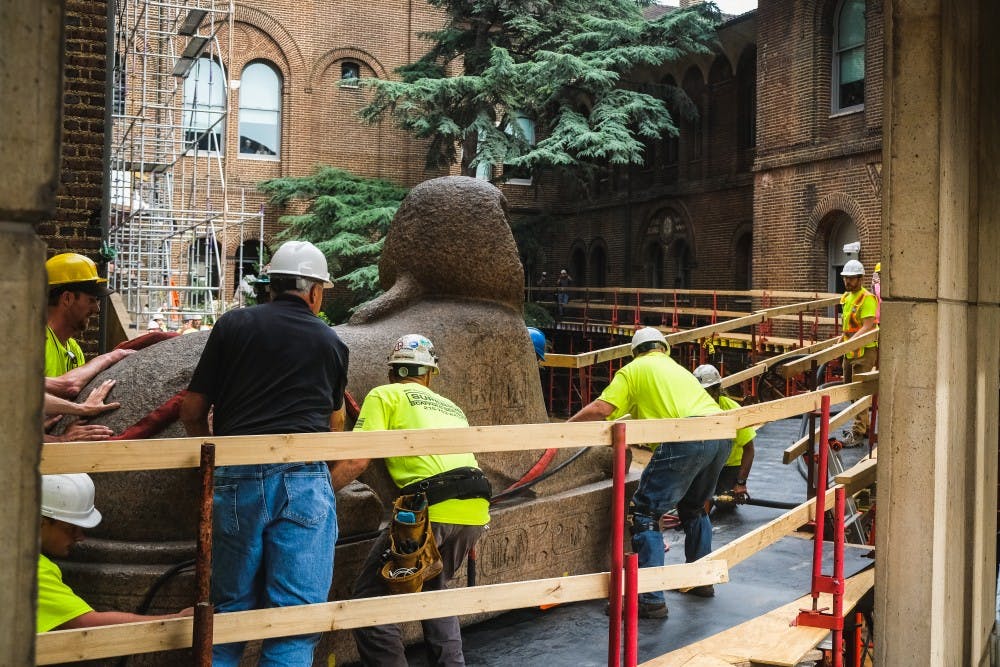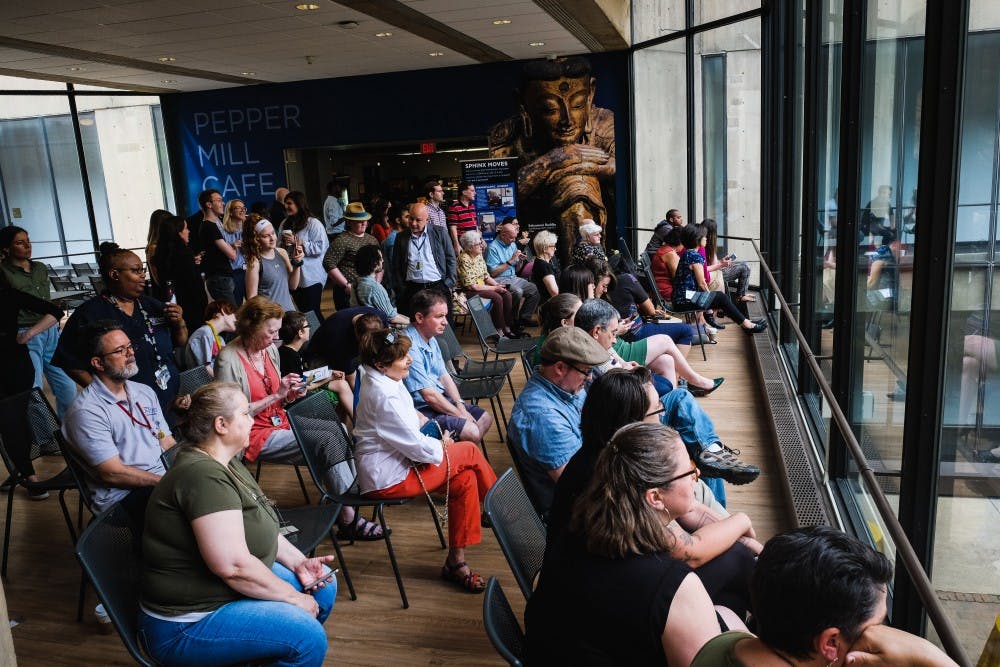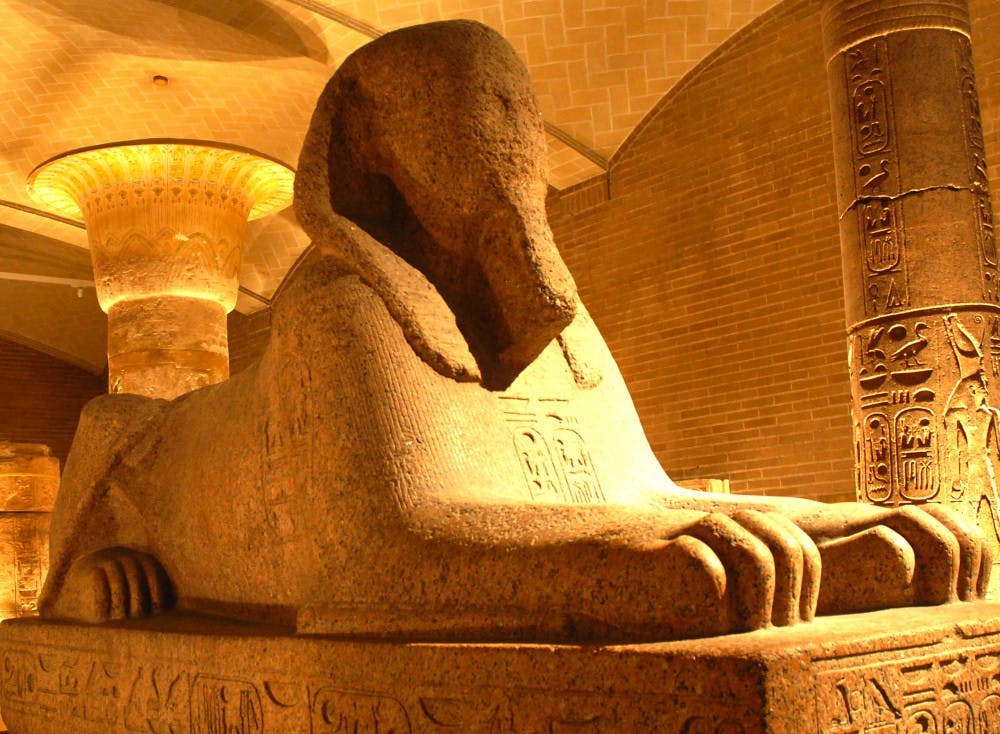
The Penn Museum has moved the 12.5–ton Sphinx of Ramses II for the first time in nearly a century.
With the help of four hovercrafts and an elevated pathway, the relocation team transported the 3,000-year-old statue from the Egypt Gallery to the main entrance hall as the last part of the three-day, 300-foot journey.

More than 100 people watched the Sphinx move out of its exhibit firsthand.
Nearly 100 people gathered Wednesday morning to watch the move of the largest authentic sphinx in North America. The move took several hours, and onlookers applauded when the sphinx first emerged in the courtyard.
Penn Museum director Julian Siggers said the sphinx's move represents a larger transformation in the museum’s physical space. This transformation includes the construction of galleries in Africa, Mexico, and Central America, and renovations such as elevators, washrooms, and air-conditioning.
Siggers added the sphinx's placement at the entrance will serve as a dramatic greeting and "moment of impact" for visitors.
“The sphinx will be the first object you see as you enter," Siggers said according to Penn Today. "It is our most iconic object, but it is also standing in as a representation for the complete transformation of the Museum."
The sphinx will be open to public view on Nov 16, according to Penn Today, in addition to the new Mexico and Central America Gallery, Africa Galleries, and the renovated Harrison Auditorium.
The renovations will cost a total of $22.452 million with an expected 20,000 square feet of space revamped across the museum, as announced in a Board of Trustees meeting on June 13.
To prepare for the sphinx's move, museum officials and engineers conducted 3D scans of the sphinx and reinforced the entrance hall's floors to support the statue's weight. Two major obstacles during the move included transporting the statue up an inclined ramp and eventually changing its direction.

The Sphinx of Ramses II had resided in the Egypt Gallery for almost a century. (Photo from the Penn Museum)
Associate curator of the museum's Egyptian section Jennifer Wegner said the sphinx first arrived at Penn in 1913 after a 6,000-mile journey by boat and horse-drawn wagon. Wegner added British archaeologist W.M Flingers Petrie uncovered the artifact near Memphis, Egypt and offered it to Penn Museum to thank the University for its financial support.
“This museum knows a great deal about history — how to excavate it, how to learn from it," Siggers said at the ceremony. “And today, making it."
Wegner said many thought another move would be impossible after the sphinx was placed in the gallery in 1926.
“This morning, another chapter in the sphinx's journey from Egypt is about to be written with this monumental undertaking,” Wegner said at the ceremony. “For the first time in almost a century, our sphinx will make his way back into the sunlight.”
The Daily Pennsylvanian is an independent, student-run newspaper. Please consider making a donation to support the coverage that shapes the University. Your generosity ensures a future of strong journalism at Penn.
Donate







